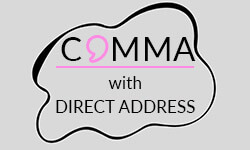
The accurate utilization of commas in academic writing is essential for maintaining clarity and cohesiveness, thereby facilitating a more effortless readability. Having difficulties understanding the rules of commas is a frequently encountered problem among students, primarily due to the lack of comprehension of comma rules. In this article, we’ll provide examples and clarify if you should be using a comma with direct address.
Inhaltsverzeichnis
When to place a comma with direct address
A direct address is a grammatical construction used when someone speaks directly to another person or group of people within a sentence or passage. It often involves using the second-person pronouns “you” or “your” and can include the name or title of the person being addressed.
The vocative case is directly related to direct address because it is the grammatical case used specifically for directly addressing someone. When you directly address someone, you are essentially using their name or a term that identifies them in a way that singles them out as the recipient of your message.
Comma
After direct address
Before direct address
Surrounding direct address
No Comma
Comma with direct address
The comma rules when it comes to direct address are quite simple. Below, you’ll find the rules, together with three examples for each.
After direct address
If the name or title comes first in a sentence, it is always followed by a comma.
Before direct address
If the name or title is displayed at the end of a sentence, a comma is always placed before it.
Surrounding direct address
If the name or title is placed in the middle of a sentence, you need to surround it with commas.
Printing Your Thesis With BachelorPrint
- High-quality bindings with customizable embossing
- 3D live preview to check your work before ordering
- Free express delivery
Configure your binding now!
FAQs
In formal writing, it’s typically recommended to use a comma with direct address to help clarify the structure of the sentence and indicate where the direct address begins and ends. However, in informal writing or conversational language, such as in texts or casual emails, people might omit a comma for brevity or stylistic reasons.
“Could you, Alex, please pass me the remote?”
In this sentence, “Alex” is the person being directly addressed. The commas surrounding “Alex” indicate that the speaker is directing their request specifically to Alex.
When writing a direct address, start with the person’s name or title. You use commas to set it off from the rest of the sentence. You can place it at the beginning, middle, or end of a sentence, however, it always needs commas surrounding it, even if you use a “hello” before it.